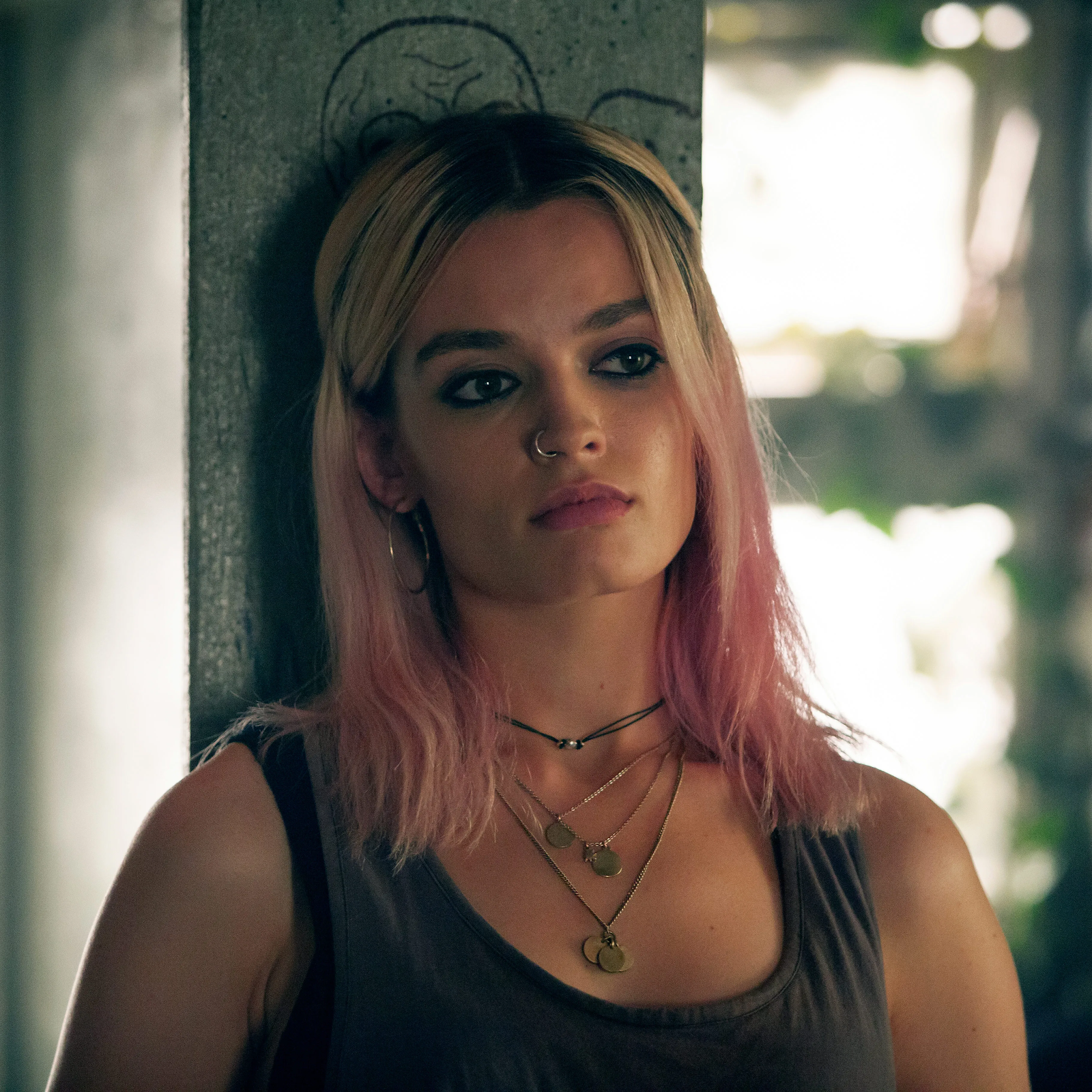Another element represented throughout this show is the idea of feminity and not conforming to society. The character that represented this, Maeve Wiley, is a feminist literature lover that isn't afraid to voice her opinion. The tv show uses many mise-en-scene elements to symbolize this character's personality, as well as the big idea she represents. Her wardrobe includes of many dark tones in t-shirts and leather jackets, as well as her having dyed purple and pink hair. Aspects of makeup like dark eyeshadow circling her eyes and dark lips help to appeal to her character. Aspects of costume design mixed with makeup design depict Maeve as a wild, chaotic, and edgy teenager. The idea of Maeve being the "edgy" teenager is depicted in a stereotypical way, but the addition of her being a literature enthusiast brings a new side to a character type represented in many other films.
Not only does Sex Education represent individual characters and their personalities, but this show represents teenagers and the stigmas they struggle around in society. The stigma around sexuality is represented vastly. With Otis's mom, Gillian Anderson, being the sex therapist for many clients, she helps unravel this idea with the interactions and guiding confrontations she has with many teenage clients. Throughout the many insertions of therapy sessions in various episodes, the shot and editing techniques utilized to show these sessions helped with breaking those stigmas.
The use of close-up and medium shots, along with the eyeline match editing technique, helps establish an intimate tone, regarding the closeness between Gillian and the teenagers. The mix of this intimate tone and the facial expressions captivated by these shots contribute to showing how the teenager feels in sharing their sexual experiences and the atmosphere they must be in to feel comfortable enough to confront their "stigma barriers".




